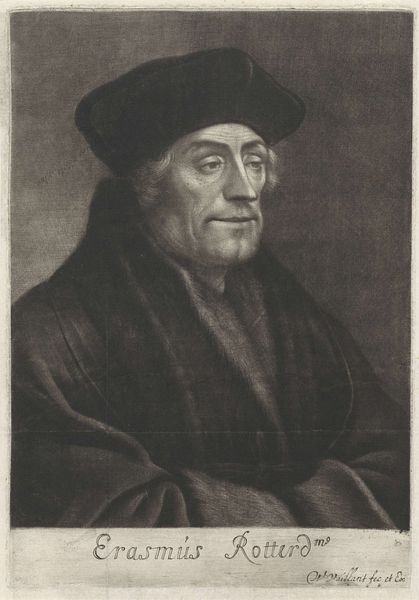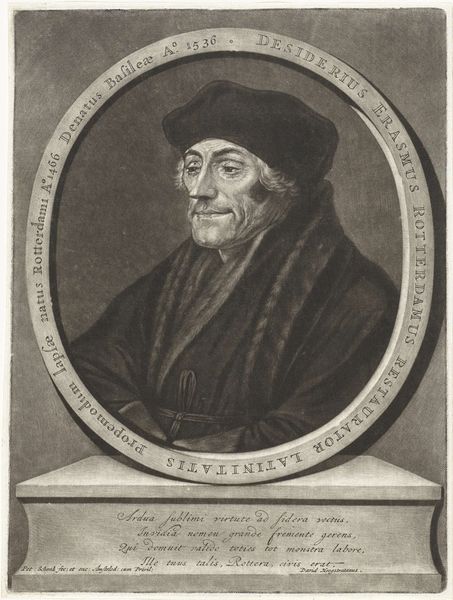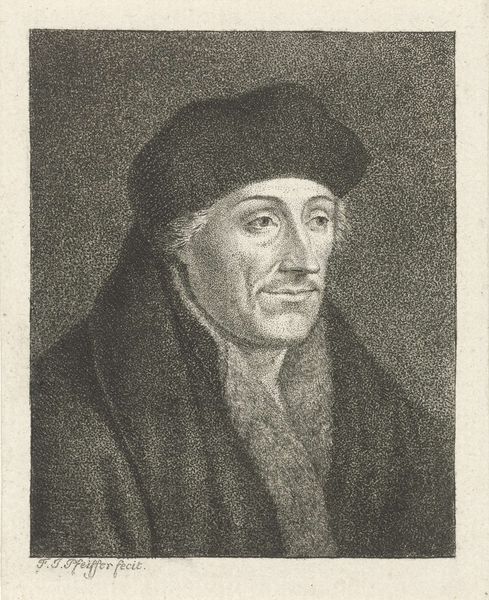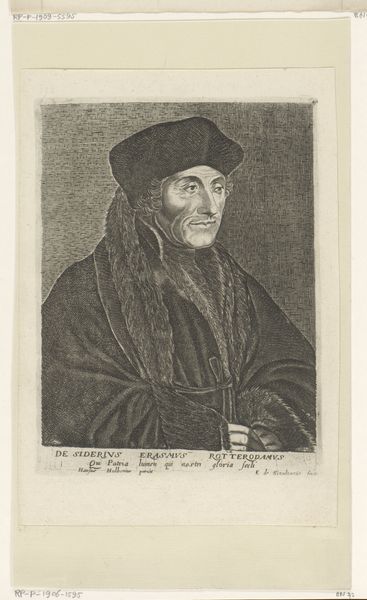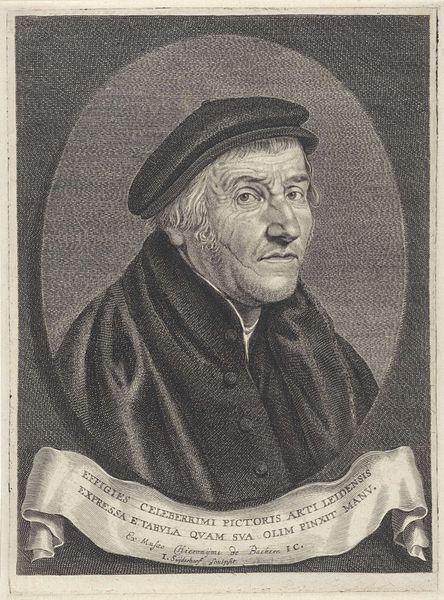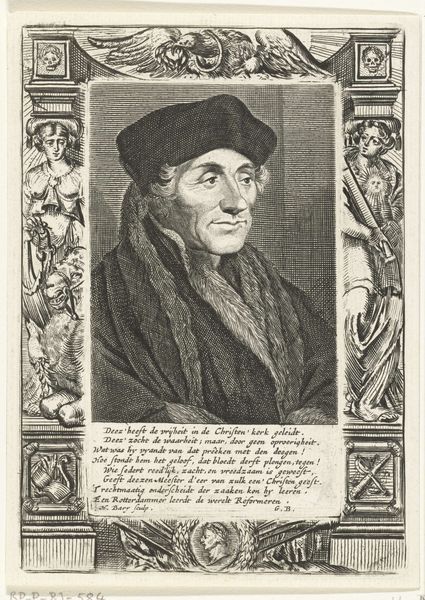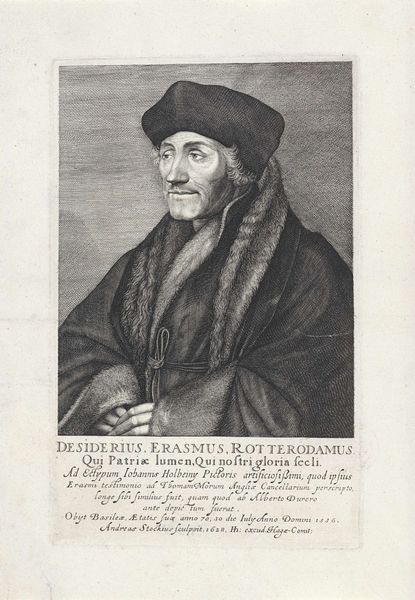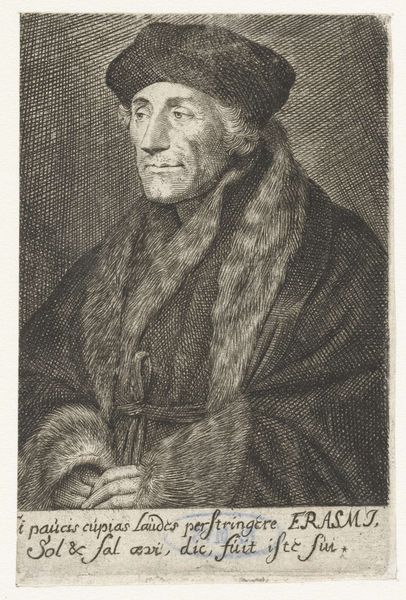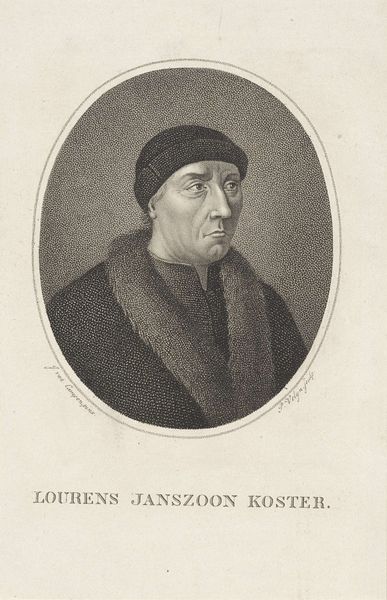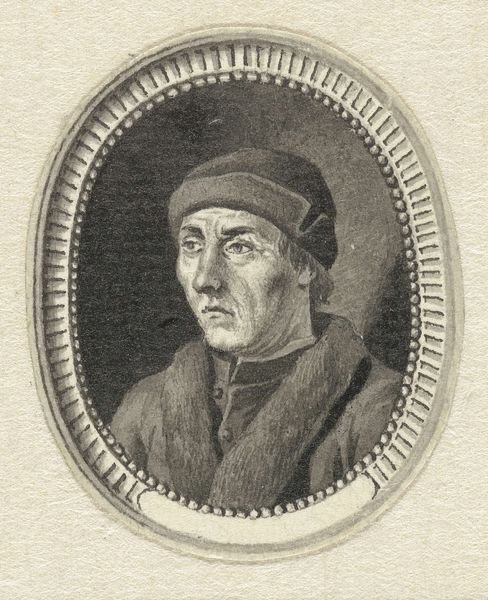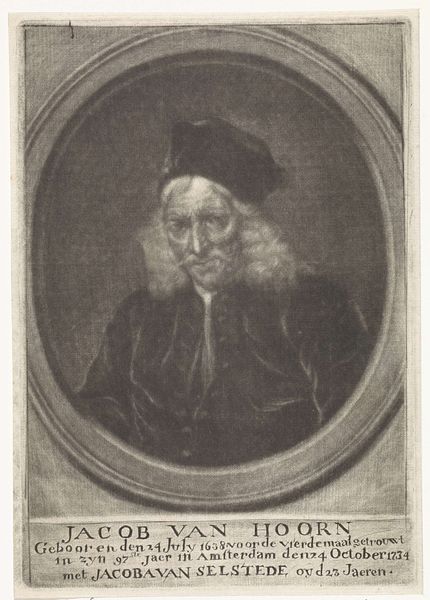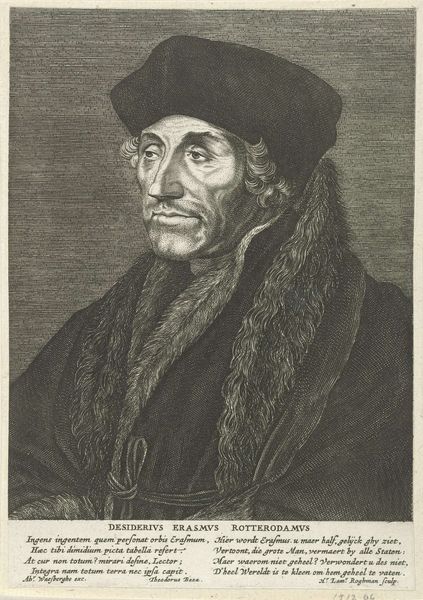
print, charcoal, engraving
#
portrait
#
baroque
# print
#
charcoal drawing
#
portrait drawing
#
charcoal
#
engraving
#
portrait art
Dimensions: height 194 mm, width 145 mm
Copyright: Rijks Museum: Open Domain
Curator: This engraving by Wallerant Vaillant, made sometime between 1658 and 1677, depicts the renowned Desiderius Erasmus. It resides here at the Rijksmuseum. Editor: Immediately, I notice how the charcoal creates this incredible velvety texture, particularly in his heavy cloak. It lends a soft, almost dreamlike quality to what could be a rather austere portrait. Curator: It's fascinating to see how Vaillant used engraving to reproduce portraits of significant figures like Erasmus. Prints allowed wider circulation and access to these images, shaping the public's perception of important intellectuals. Editor: Yes, and if you look closely at the lines around Erasmus's eyes, there’s a clear indication of age, but softened again by that charcoal haze. Notice also how his gaze drifts off to the right; this direction creates depth, pulling the viewer in rather than confronting them directly. Curator: The choice of Erasmus as a subject is also significant. In the 17th century, evoking his image aligned one with humanist values and intellectual prowess, projecting a certain social cache. Editor: And the texture definitely softens the severity that line engraving can sometimes have. It makes him much more relatable. I mean, even his cap feels almost… cozy? Curator: Indeed! By producing engravings like this, Vaillant was participating in the construction of historical memory and contributing to the visual culture of his time. Think of this image as early social media, almost! Editor: Thinking purely aesthetically, the use of tonal gradations, especially that contrast between the light falling on his face and the dark folds of his clothing, is really impressive. It conveys so much with such subtlety! Curator: Exactly, by examining this artwork we gain insights into the ways that historical figures were represented, consumed, and utilized in the construction of cultural narratives. Editor: Absolutely, and reflecting on the technique, we see an innovative way of achieving softness with typically harsh tools, revealing, for me, the possibilities within limitation.
Comments
No comments
Be the first to comment and join the conversation on the ultimate creative platform.
